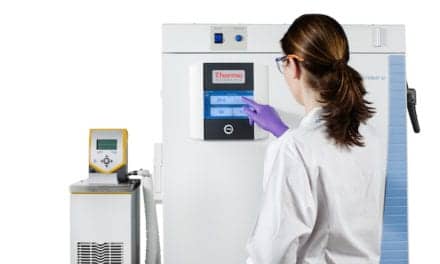With patients catching up on routine diagnostic tests, lab personnel are being overwhelmed with demand as they cope with technician retirements, overwork, and burnout. Technology can help increase lab workflow efficiency.
By Molly Broache
Is your lab seeing a spike in routine screenings? From a public health perspective, it’s great to see people getting back into the pattern of attending to their physical well-being. But from a lab workflow perspective, it’s a real challenge.
The pandemic created a perfect storm of understaffing, over-demand, and burnout. But as patients begin catching up with years’ worth of routine diagnostic screening, the overburdened laboratory workforce is faced with a crush of screenings that is overwhelming the lab workflow.
Earlier this year, Forbes reported on current pain points in health care and suggested that clinicians can expect a continued and significant shortage of lab technicians over the next decade1. To make matters worse, a spike in retirements amid the stress of the pandemic has left those still in the lab without the resources they need logistically.
With smaller teams of lab technicians and the likely rise in testing, there is a need now more than ever for the industry to leverage robotics, artificial intelligence (AI), and informatics to drive automation. This is true across the spectrum, and particularly within the field of sexually transmitted infection (STI) diagnostics.
Catching up with STI Screenings
The pandemic had a notable effect on screening for STIs, as many clinics closed entirely or limited visits so that only symptomatic patients could be seen. However, STIs often do not have symptoms, so these conditions are often only detected during routine screening exams. Additionally, health care staff members that once supported STI screening were redeployed to help with COVID-19 testing and containment measures; much of the staff at US federally funded STI program sites were, in fact, permanently reassigned2.
From 2019 to 2020, CDC data suggested that cases of chlamydia, one of the most common non-viral STIs, dropped by about 14%3. Experts believe this decline in cases was not due to a decrease in disease, but to the dramatic, pandemic-driven drop in the number of tests administered.4 A delay in timely diagnosis and treatment of STIs can cause a multitude of issues, including a higher likelihood of passing undiagnosed infections onto partners and the ability for an infection to lead to more serious health consequences, such as pelvic inflammatory disease or infertility4.
Lab Workflow Innovation
But the pandemic may also have catalyzed a new era of innovation in the medical technology field—and especially in diagnostics. Highly anticipated advanced molecular diagnostic systems and related assays are emerging on the market to enhance lab workflow, afford greater sampling options, reduce human touchpoints (and thus potentially reducing the likelihood of human error) and longer walk-away times so that technicians can focus their skills, attention and expertise on more complex work.
In terms of assays, to encourage routine screening, it is critical for labs and health care systems to offer STI tests that have a quick time to result and user-friendly techniques for processing5. Chlamydia trachomatis (CT) and Neisseria gonorrhoeae (GC) are two of the most commonly reported bacterial STIs in the United States6.
And although Trichomonas vaginalis (TV) remains a non-notifiable disease, it is the most prevalent STI in the U.S. and likely causes more STIs in many populations than CT and GC combined5. Labs can elevate the standard of testing by addressing the three most prevalent non-viral sexually transmitted infections (STIs) in one assay.
Additionally, diagnostic samples normally prepared by hand are streamlined through automated pre-analytical processing, which may reduce the likelihood of human error. The evolving diagnostic landscape is sure to be shaped by the kinds of automated and AI-driven technologies that offer greater precision, enhanced speed, and improved accuracy in testing to ultimately provide results clinicians need to make the best decisions for the patients in their care.
The challenges faced by laboratories—increased demand (potentially even beyond pre-COVID levels), burnout, and staffing shortages—coupled with the always-on demand and expectation for accuracy, precision, and efficiency are ushering in a new, arguably overdue, era of diagnostics that will make a difference for lab teams and the clinicians and patients they serve.
Molly Broache is Associate Director, Medical Affairs at BD Integrated Diagnostic Solutions.
References
1. Kelly, J. (2022). Unless We Future-Proof Healthcare, Study Shows That By 2025, 75% Of Healthcare Workers Will Leave The Profession. https://www.forbes.com/sites/jackkelly/2022/03/15/unless-we-future-proof-healthcare-study-shows-that-by-2025-75-of-healthcare-workers-will-leave-the-profession/?sh=105b2e2a2bcb.
2. Wright SS, Kreisel KM, Hitt JC, Pagaoa MA, Weinstock HS, Thorpe PG. Impact of the COVID-19 Pandemic on Centers for Disease Control and Prevention-Funded Sexually Transmitted Disease Programs. Sex Transm Dis. 2022 Apr 1;49(4):e61-e63. doi: 10.1097/OLQ.0000000000001566. PMID: 34654769.
3. Pagaoa M, Grey J, Torrone E, Kreisel K, Stenger M, Weinstock H. Trends in Nationally Notifiable Sexually Transmitted Disease Case Reports During the US COVID-19 Pandemic, January to December 2020. Sex Transm Dis. 2021;48(10):798-804. doi:10.1097/OLQ.0000000000001506
4. CDC. (2022). Impact of COVID-19 on STDs. https://www.cdc.gov/std/statistics/2020/impact.htm
5. Van Der Pol B, Torres-Chavolla E, Kodsi S, et al. Clinical Performance of the BD CTGCTV2 Assay for the BD MAX System for Detection of Chlamydia trachomatis, Neisseria gonorrhea, and Trichomonas vaginalis Infections. Sexually Transmitted Diseases. 2021;48(2):134-140. doi: 10.1097/OLQ.0000000000001280
6. Division of STD Prevention, National Center for HIV, Viral Hepatitis, STD, and TB Prevention, Centers for Disease Control and Prevention. Accessed on October 12, 2021, at https://www.cdc.gov/std/statistics/prevalence-2020-at-a-glance.htm





